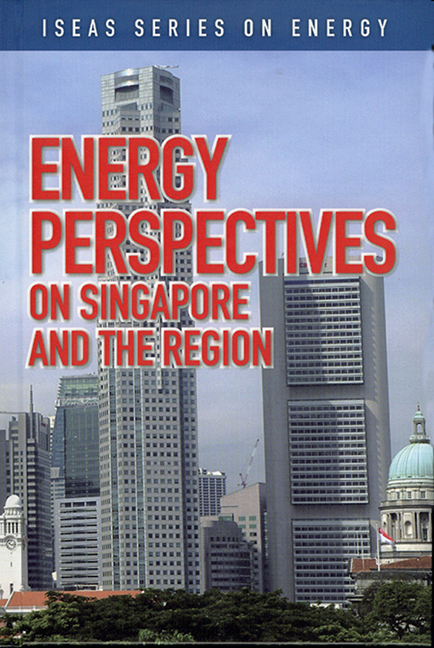Book contents
- Frontmatter
- Contents
- Foreword
- Preface
- The Contributors
- 1 Overview of Singapore's Energy Situation
- 2 Singapore's Changing Landscapes in Energy
- 3 Singapore's Role as a Key Oil Trading Centre in Asia
- 4 Large-Scale Solar PV Power Generation in Urban High-Rise Buildings in Singapore
- 5 The High-Carbon Story of Urban Development in Southeast Asia
- 6 Renewable Energy and the Environment: Technology and Economic Perspectives
- 7 Delivering Results in a Booming Rig Market
- 8 The Success Story of Rig Building in Singapore
- 9 The Singapore Oil Situation
- 10 Singapore Petroleum Company: Adding Value to the Singapore Oil Industry
- 11 Oil Storage: The Singapore Story
- REGIONAL and INTERNATIONAL
- Index
2 - Singapore's Changing Landscapes in Energy
Published online by Cambridge University Press: 21 October 2015
- Frontmatter
- Contents
- Foreword
- Preface
- The Contributors
- 1 Overview of Singapore's Energy Situation
- 2 Singapore's Changing Landscapes in Energy
- 3 Singapore's Role as a Key Oil Trading Centre in Asia
- 4 Large-Scale Solar PV Power Generation in Urban High-Rise Buildings in Singapore
- 5 The High-Carbon Story of Urban Development in Southeast Asia
- 6 Renewable Energy and the Environment: Technology and Economic Perspectives
- 7 Delivering Results in a Booming Rig Market
- 8 The Success Story of Rig Building in Singapore
- 9 The Singapore Oil Situation
- 10 Singapore Petroleum Company: Adding Value to the Singapore Oil Industry
- 11 Oil Storage: The Singapore Story
- REGIONAL and INTERNATIONAL
- Index
Summary
Singapore has taken various liberalization measures in its energy market, which has improved its efficiency in recent years. This chapter will highlight the energy security aspects of Singapore, including the feasibility of using alternative sources of energy.
WHY COMPETITION IS NEEDED
About ten years ago, there was one sole provider of utilities in Singapore, viz the Public Utilities Board (PUB). This structure served Singapore adequately for three decades. However in the mid-1990s, rising electricity prices had become a concern, as it would affect economic competitiveness. The government concluded that the regulated system should be liberalized (in a way similar to that of the telecommunications sector). It felt that competition would lead to higher efficiencies and competitive pricing for consumers.
During that time, the technologies that were viable and available were limited. Singapore's three largest generation companies were all operating oil- fired steam generators. Without natural resources of its own, Singapore had to buy oil from global fuel markets. With limited choices in fuel mix, the issues then were whether Singapore was efficient as a consumer and as a producer of electricity. The costs to produce and deliver electricity are fully passed to consumers in Singapore. This helps to ensure that consumption is not distorted by subsidies and provides incentives for the efficient use of electricity over the long term.
As for the production and delivery of electricity, the issue was whether the PUB as a monopoly provider would remain efficient as the system grows.
THE ELECTRICITY INDUSTRY
The first step towards liberalization of the energy market took place in 1995. The operational parts of the electricity and piped gas sectors, for example, electricity generation, gas and electricity transport and retail were corporatized under a vertically integrated monopoly, namely the Singapore Power (SP). The PUB assumed the role of the regulator of gas and electricity.
At the same time, a separate generation company was also set up in 1999 to compete with SP.
- Type
- Chapter
- Information
- Energy Perspectives on Singapore and the Region , pp. 23 - 30Publisher: ISEAS–Yusof Ishak InstitutePrint publication year: 2007

